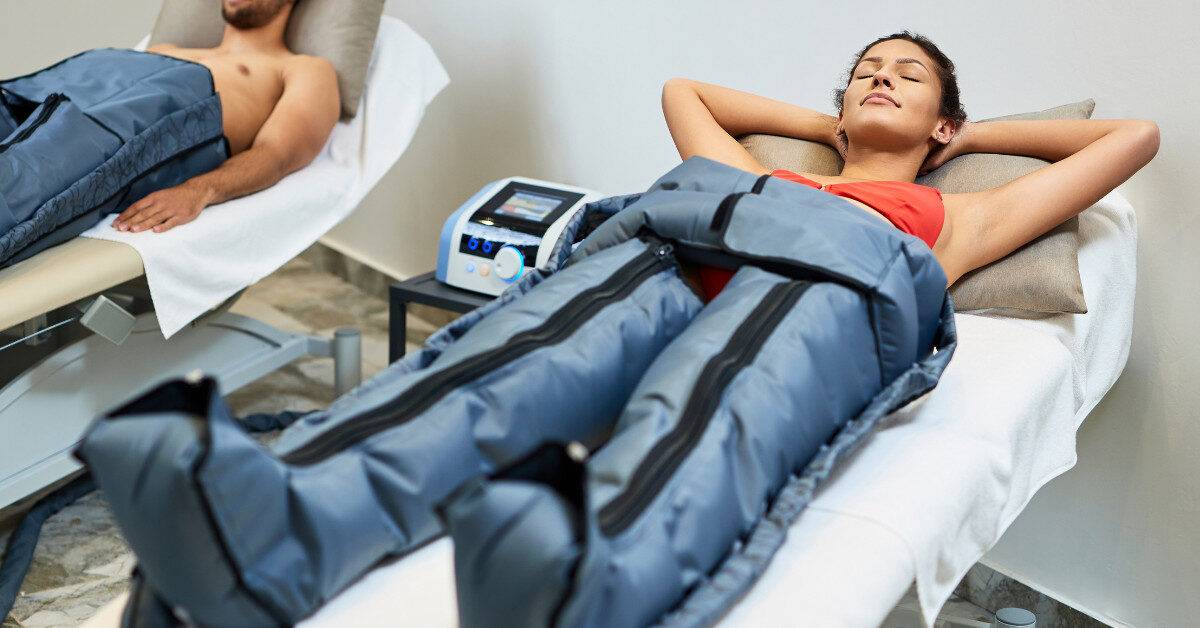Have you noticed “electric shocks” running down your leg after a bike ride? How about feeling “pins and needles” at the tips of your fingers after rotating your shoulder repetitively? What you are experiencing is nerve compression, or muscle pressing on nerves.
Getting On Your Nerves
When you perform repetitive actions with the same muscle or muscle group, they can build up so much that they begin to press on a nerve.
Painters and other professions where consistent arm rotation happens regularly often experience an increase in the size of the teres minor muscle. When it becomes so large, it begins to press on the nerve under the muscle. And that’s what causes the pins-and-needles sensation we mentioned above.
It’s similar for cyclists with bikes which aren’t fitted properly to them. They end up with a bit of an outward hip-rotation during pedaling. That, in turn, over-develops the piriformis muscle which is located on the side of the hip, and when it becomes larger than the space it’s given, it pushes on the sciatic nerve. Hence what feels like electric shocks down your leg.
Tensing Up
Nerves are designed to send messages from the brain to the muscles to tell them to move. So if you want to do something like grip and lift a weight or push off from a starting block, your brain sends a message through the nervous system to nerves called motor fibers (which make up 60% of the nerves in your body) and into the muscles that need to react.
The other portion of nerves in the nervous system are sensory fibers which relay messages back to the brain. They tell it what position the muscles are in currently and when they are relaxed so the brain knows when to stop or start sending signals to move. But as amazing as this system is, there can sometimes be malfunctions.
In some circumstances, if a muscle stays tight for too long, the nervous system assumes that is its new relaxed state. So when your muscles have been stretching and contracting during exercise or continuous movement, and your brain sends a message to return to the relaxed state, the nerves tell it to return the “new” relaxed state. So your muscles end up staying tight and contracted instead of fully relaxing.
That doesn’t only apply to athletes. How often do you catch yourself hunched over your keyboard or phone? When you sit or stand like that for hours every day, your nerves tell your brain that’s your muscles new relaxed state. And continuous stress levels aren’t doing anything to help.
So how do we fix it?
Calming Your Nerves: Fixing Nerve Compression
Luckily, treatment is pretty direct – deep tissue massage, assisted stretching, and rest.
The first step in fixing the nerve compression is to figure out which nerve is compressed and where. For example, say you are experiencing the pins and needles sensation in your fingertips. Nerves in the arm begin in the neck, travel under the collar bone and some major muscles, into both the back and front of the arm, and all the way to the fingertips. So while you’re feeling it in your fingers, the cause can stem from much farther up. And it’s not uncommon for a nerve to be compressed in more than one spot. With a few tests, your massage therapist can determine the location and cause.
Because so much of nerve compression is caused by muscles, massage is an effective method of relief. Your therapist will work on massaging and lengthening the short, tight muscles to lift the compression off of the nerve. And he or she can also give you some tips and exercises to fix postures and keep the compression from redeveloping.
It’s important to note that after the muscle returns to its natural relaxed state, it may still take some time for the nerve to heal. So you may still experience some of the same symptoms, but they will go away with some time.
If you believe you are suffering from any symptoms of nerve compression, you should contact a trained massage therapist as soon as you can to prevent further nerve damage.
And if you’d like more information on treatment, you can reach out to us on our Contact page or give us a call. We will be more than happy to answer any questions you have or get you started with treatment.




